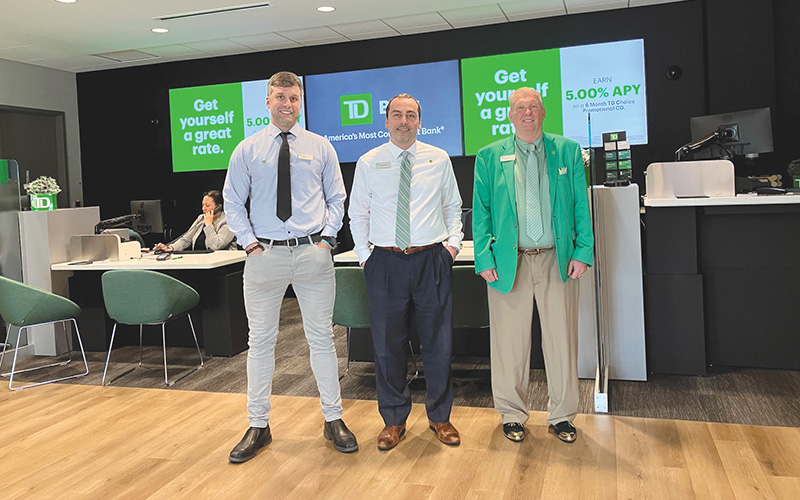This time of year, there’s a lot of talk about kids going back to school.
While quality education may be on the forefront of many parents’ minds, there are a variety of factors that contribute to a student’s success.
Designing and building optimal learning environments with current and future generations in mind helps lay the foundation for an improved educational experience. With evolving student expectations and the skyrocketing enrollment rates, school design and building trends are moving towards a more multi-functional approach.
At W.M. Jordan Company, we understand that building an educational environment is complex. We have built more than 150 educational facilities across North Carolina and Virginia, encompassing both higher educational facilities and K-12 schools. We also make it a point to partner with design teams who understand the underlying needs of various schools and programs.
Although choosing a builder and architect experienced in higher education and K-12 are key, understanding the current and future needs of these schools is imperative.
Here are a few modern-day considerations that play a part in a school’s building and design.
Safety
With the number of safety incidents on school campuses prevalent in today’s society, a common concern among school administrators, staff, students and parents is safety. Safety involves many active and passive considerations, from the obvious to the more obscure.
At Town Creek Middle School – the school we are building in Brunswick County – safety played a big part in design. Our architect on the project, Doug Burns of KSQ Design, points out that design choices surrounding sightlines, control over hallways and the type and placement of windows are important safety considerations. Windows also provide natural light which enhances learning, productivity and mood.
Equally important to safety is developing the ability to support an active security system on campus. This includes floor and site plans that allow remote and onsite access control, along with lockable classroom doors that do not provide visibility into the classroom when the door is closed.
School layout also directly affects safety. At Town Creek, the school design revolves around a central common area that serves as the backbone for many parts of the school. Burns says this design helps with both active and passive security because there is a queuing area for students and staff that allows them to access other common areas without leaving the building.
The importance of safety considerations also extends beyond the design phase. For instance, at Roland-Grise Middle School in Wilmington, N.C., we are in the process of renovating two buildings during the academic school year. This requires us to maintain clear and constant communication, engage in continuous maintenance of our safety measures put in place, such as fencing, and plan for improved vehicular and pedestrian traffic flow while construction is underway.
Collaborative Spaces
Collaborative spaces involve more than just an area where students and teachers can congregate. Collaborative spaces take into consideration factors that promote learning and increase engagement.
According to Burns, classrooms need flexible multifunctional spaces that allow teachers to use the same space for different purposes. This includes careful thought and consideration when selecting furniture, fixtures and equipment.
These flexible options allow a teacher to reconfigure a classroom based on their unique needs, such as moving furniture around to accommodate a larger or smaller class size or hands-on activities.
Collaborative spaces also encompass alternative learning areas and makerspaces. These spaces encourage creativity and hands-on learning. To many of us, makerspaces are what we remember as shop class. These areas are raw spaces that house equipment for printing, metal shop, robotics and woodworking. When designing and constructing these spaces, special attention should to be given to natural lighting, temperature, noise isolation and ventilation.
Alternative learning areas incorporate design elements, such as tiered seating, gazebos or spaces that tie into the school’s learning programs. For Town Creek Middle School, W.M. Jordan and KSQ worked together to integrate outdoor learning elements into the design to foster learning in alternative spaces.
Building For The Future
Modern-day construction techniques help us build for the future by providing more flexibility. While masonry was the primary method of construction for years, many newer schools are constructed with metal studs, sheet rock and drywall. This makes it easy to change interior walls to accommodate new classroom styles or additional storage space that can be shared between rooms.
Evolution and change are inevitable. By offering more flexible building solutions to educational facilities, W.M. Jordan can help schools embrace change rather than shy away from it.
Rob Beale is Vice President at W. M. Jordan Company, leading the company’s efforts in the Carolinas region. W.M. Jordan Company provides construction management, design build, development, virtual construction, sustainability and contracting services to a diverse clientele.Rob opened the company’s Wilmington, NC office in 2012 with only five employees. Six years and two office expansions later, he has grown his staff to 34, with a regional revenue of $85 million in 2017. Rob started with W. M. Jordan Company in 1996 as the company’s first college intern. After earning a BS in Construction Management from Virginia Tech, his career at W.M. Jordan Company quickly accelerated, including nearly every aspect of construction service delivery. As a true believer in life-long learning, Rob continues to develop professionally and personally. He is currently completing an Executive Education Program for Leadership Development at Harvard University. Other past pursuits include the Disney Institute’s Leadership Excellence Program, FMI Construction Executive Institute’s Project Executive Course, and AGC of America’s Advanced Management Course. Rob is also on the Board of Directors for the Association of Builders and Contractors (ABC), Carolinas chapter and serves as a member of both the Board of Directors and the Fun Committee for Wilmington Downtown Inc. (WDI).


